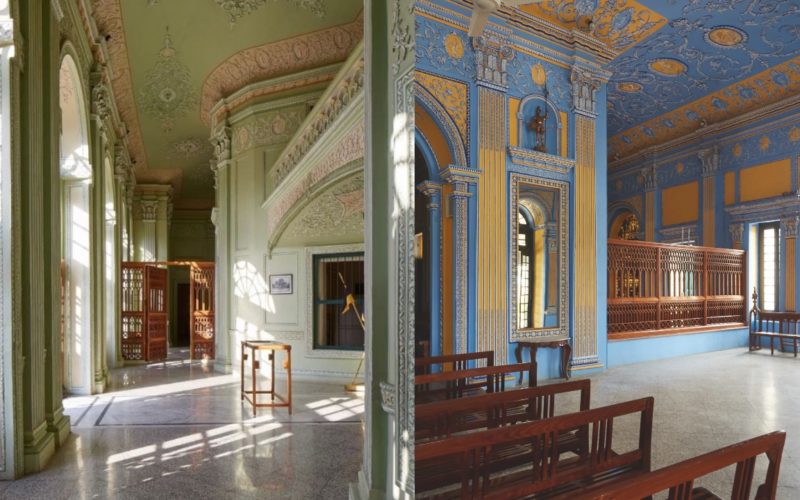Vogue is one of India’s top magazines and often stars in the dreams of celebs from different walks of life. Featuring in one of the articles is considered a big deal, think about making it to the cover of the magazine.
When a palace turned school from India was featured in the magazine, students and alumni of the school were overjoyed.
GUYS OUR SCHOOL GOT FEATURED IN VOGUE 🤣🤣🤣😭😭😭😭 pic.twitter.com/sgavv52BgG
— aishika (@biharibitch) September 12, 2022
For the ‘Culture and Living’ segment of Vogue India, the newly restored palace-turned-school in Lucknow ‘La Martinière’ was featured.

In the article, the author beautifully talks of the school’s history, the artistic marvel it is, and the magnificent eye of a Frenchman named Claude Martin from Lyon who built the palace in Lucknow in the 18th century.
Looking for adventure, the soldier fled Lyon and fought against the British. He slowly and stealthily made his way into the company of the Nawab of Awadh, Asaf-ud-Daula, at Lucknow and became the wealthiest firang in India. He then built an elegant house on the banks of the Gomti river.
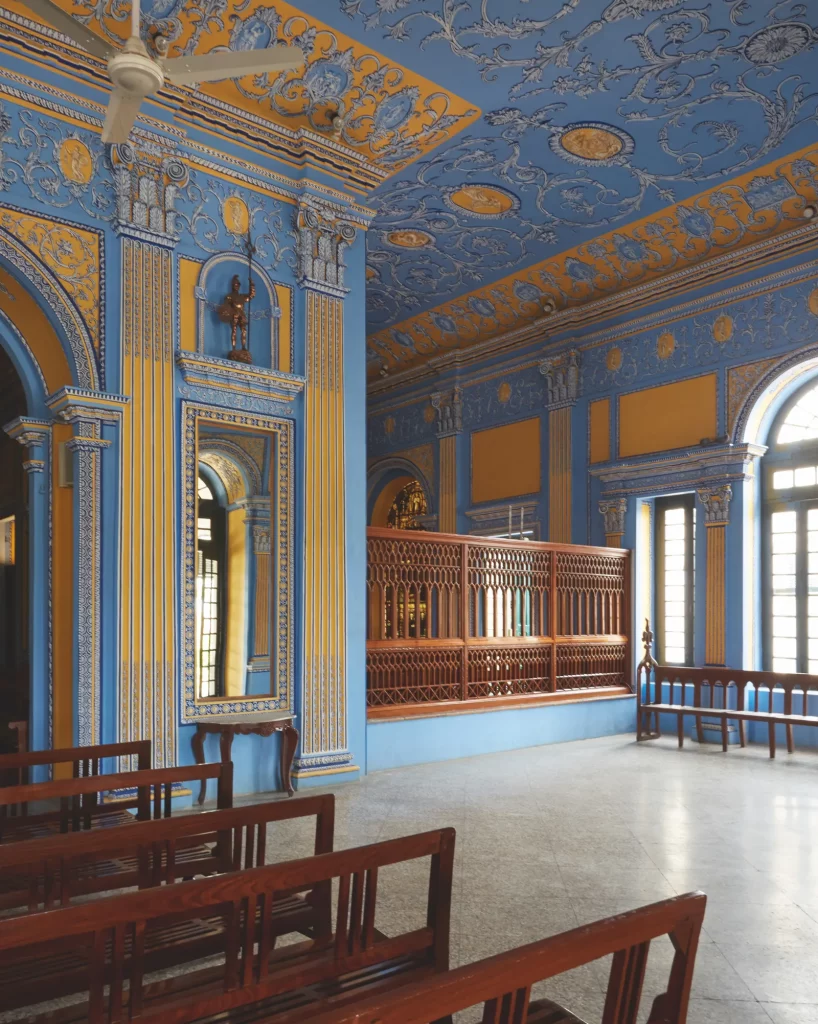
“He had the cellars designed to flood during hot weather, covered the ceilings with mirrors to reflect the ripples of the river, and christened it Château de Lyon. Martin filled his mansion with Enlightenment-era treasures, including ranks of classical statues and a philosophical library with many Oriental manuscripts,” read the article.
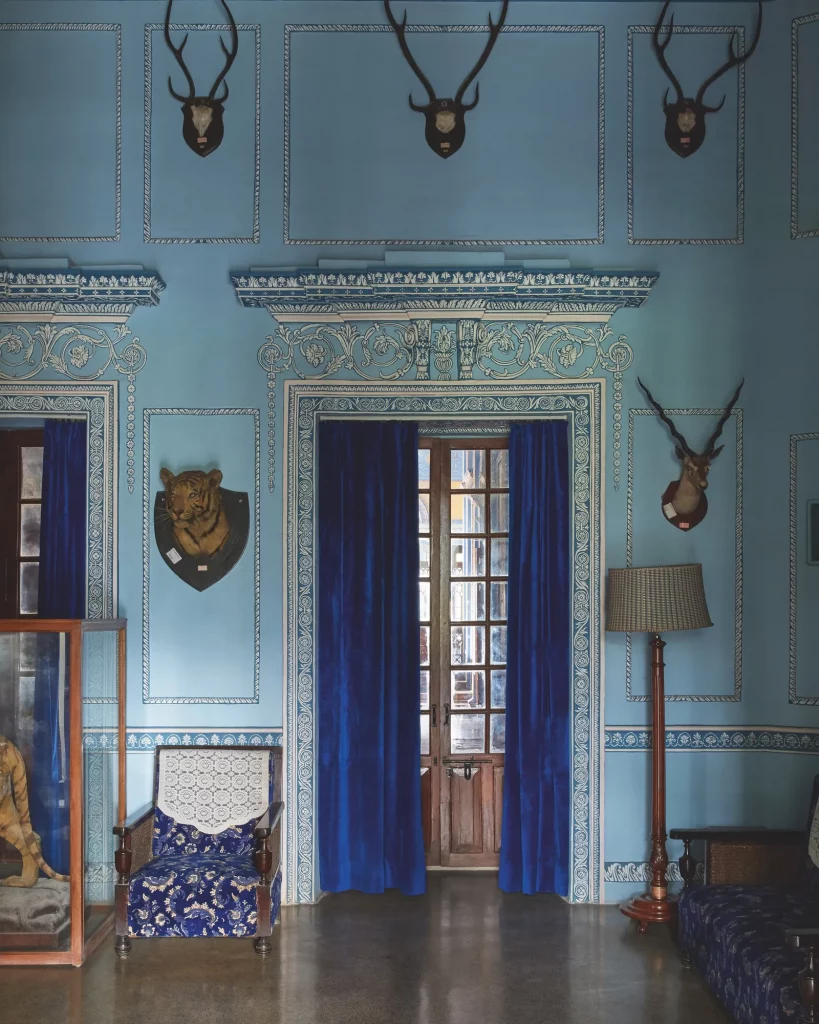
He also had a vast collection of textiles and exotic animals that could be seen in his palace.
“From silver tissue and gold-threaded brocade to coarse chintz and country silk, Martin also amassed a vast textile collection, which he had fashioned into turbans, sashes, tents, and, his pride and joy, a set of four Gobelins tapestries from Paris depicting exotic panthers, lions, and horses.”
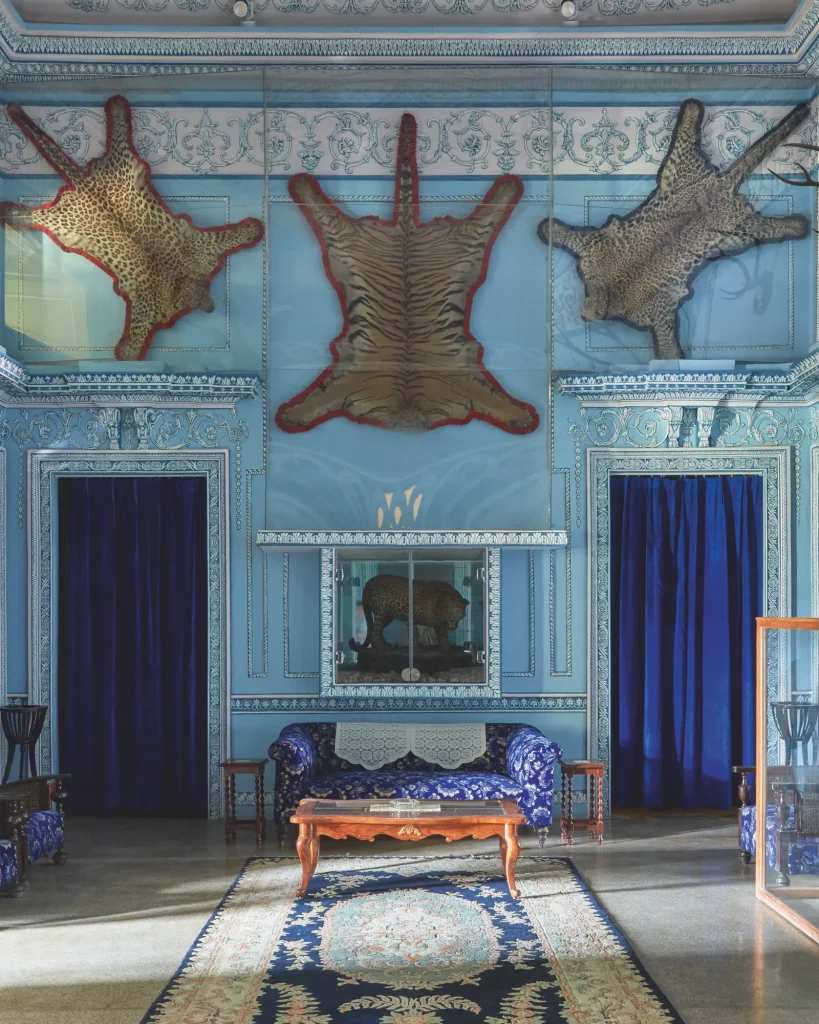
Vibrant color schemes, wooden furniture, paintings, statues, and rare artifacts decorated his palace. But he never saw the house completed when he died in 1800.
“As surreal and fanciful as its squire, Constantia’s façade is dominated by a peculiar array of statues, including a pair of enormous lions, their mouths once lit with glowing red lanterns. No less ambitious is the interior, on which with unbridled audacity Martin lavished arabesques, bas-reliefs, and riotous stucco. It was rumored that he had even imported plaster-of-Paris plaques from Josiah Wedgwood, but subsequent scholarship has concluded they bear the mark of local craftsmen.”
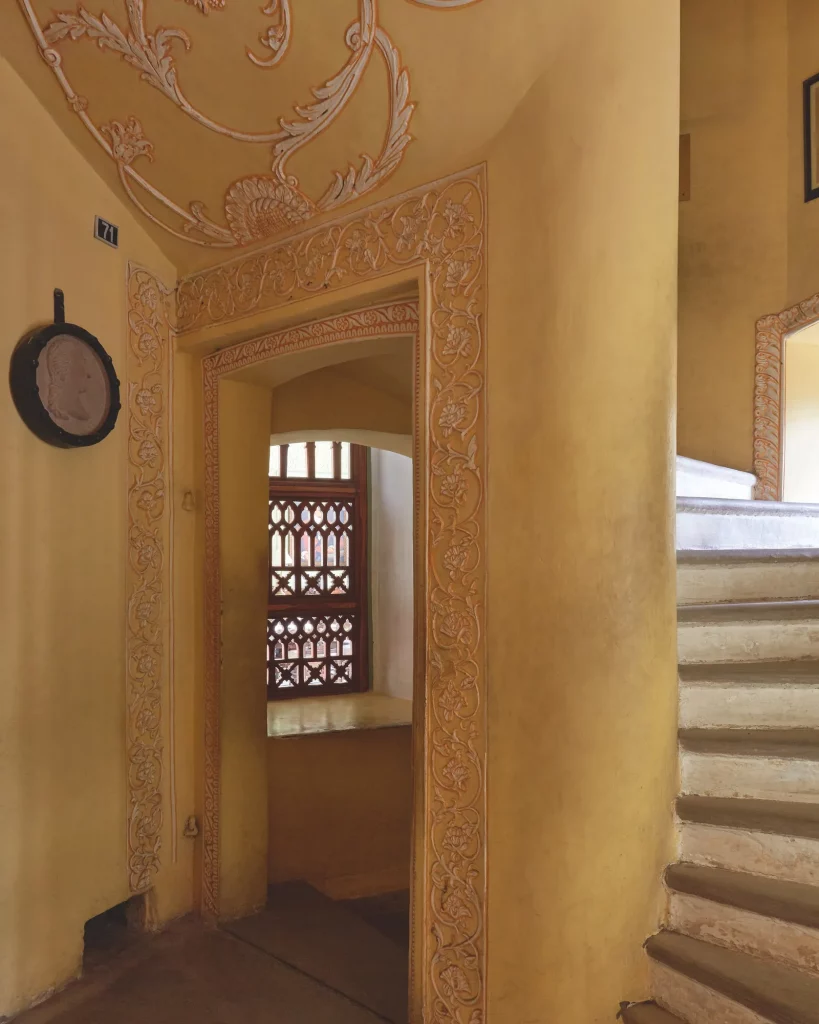
It’s said that Martin foresaw his death and made arrangements for his fantastical fort to be endowed as a boys’ school, named La Martinière College, along with two others in Calcutta and Lyon.
Over two centuries later, his last wish has turned into reality by conservation architect Dr. Neeta Dass, the principal Carlyle McFarland, and the generosity of the school’s alumni.
“Thanks to this disparate band of tireless champions, along with organizations such as ‘Alliance Française’ in India, La Martinière once more stands gleaming. It remains a beacon of learning and belonging for generations of Martinians, who flock to the annual Founder’s Day from all over the world and proudly see themselves as sons of the ‘Frenchman among the mangoes’.”
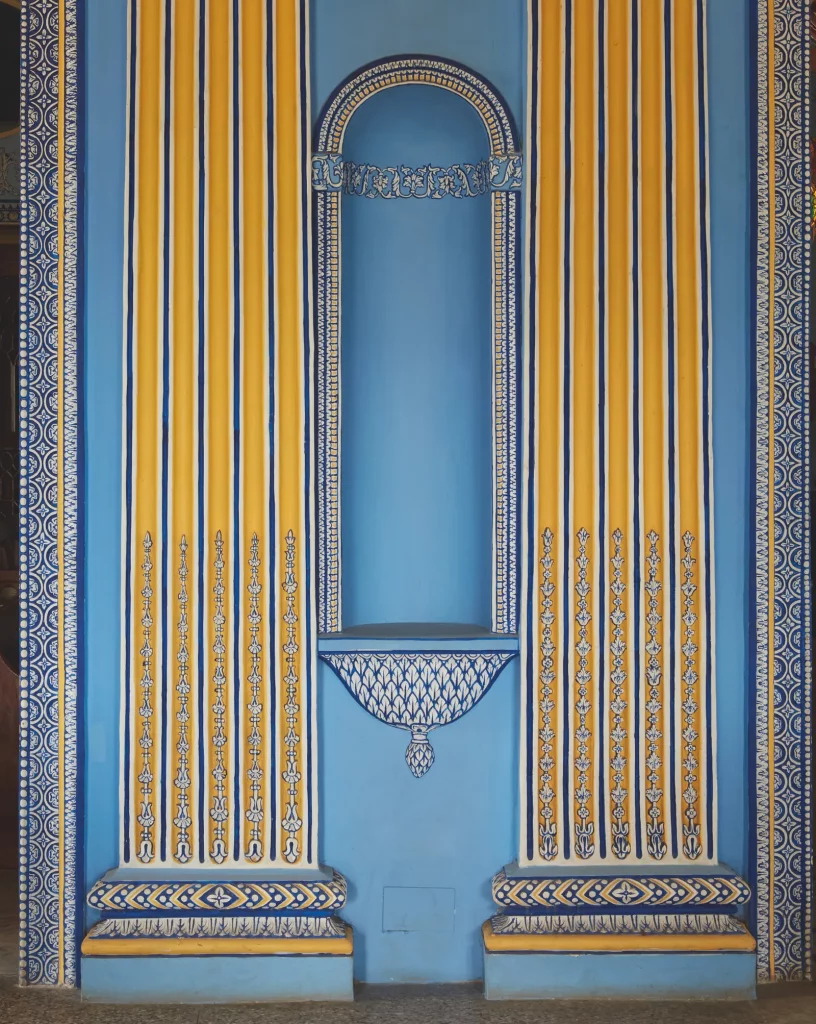
Fellow Martinians online were proud of the history they belonged to. This is how they reacted:
i will cut ties from this place most of the times but it’s so beautiful i cannot 😭😭😭
— aishika (@biharibitch) September 12, 2022
That's my school lollllll https://t.co/HI7HMA8wqP
— vid (@vidhaankhare) September 13, 2022
this school is crazyy like i remember on my first visit i was gagged when i found out there's literally a grave if you go deeper into the chamber … https://t.co/1r90cWTVtr pic.twitter.com/36x12Dr91B
— kai (@fwordedcakes) September 13, 2022
People going crazy looking at these pictures. Me sitting here thinking "wait till you see pictures of the outer facade". Proud to call this place my school.
Happy Founder's Day! https://t.co/9D5bxSEVEP
— Apurva Zutshi (@ApurvaZutshi) September 13, 2022
it's la martiniere boys college tho. https://t.co/CsPPe5kEOc
— yami (@yamentos) September 13, 2022
Some couldn’t believe that this artistic marvel is actually a school.
Where is this school in India and why it looks like Hogwarts but desi version 😭😭
It’s soo pretty, would have alone motivated me to attend school https://t.co/my4ssQgzGP
— Mridu ⚯͛ (@mj_aIways) September 13, 2022
yall study in here? https://t.co/CQi7ZB4l7p
— 🃏😼 joonie day ☘️🪴 (@agustdbl0gs) September 13, 2022
finding out that this schools fees isn't too high from what my schools fees was is so fucking hilarious because my school SMELLS LIKE A SEWER AND THEIRS LOOKS LIKE THIS? https://t.co/HTaffnJCuF
— anagecko (@notanags_) September 13, 2022
school?!! do you need to board a train from platform 9 3/4 to get there??? https://t.co/KSevpOmnyi
— omi-wan kenobi (@potatopututu) September 13, 2022
this feels like a school for royal kids. https://t.co/WEgBwVbfWv
— ة (@hyggenx) September 13, 2022
Damn this is like hogwarts hindustani version😭😭 https://t.co/HwKuTBWMMS
— lachimolala (@Bangtaynie13) September 13, 2022
when education transforms from being a necessity to luxury. https://t.co/H3CGXAWajH
— guru (@fu_edison_) September 13, 2022
Now how tf Is this a school.. https://t.co/rv2eIglfPb
— leila is sarah's pr ! (@ktewlsh) September 13, 2022
why did my school look like a mental asylum??? https://t.co/ieak3JPHaP
— Kavya (@caavyaa) September 13, 2022
this girls school is the Bridgerton set wtf https://t.co/hspk5qrSyN
— ¡♡¡ (@yxsi_) September 13, 2022
It’s indeed pretaaaaaayyyy! Minus the grave, I would have loved to live inside this school.




